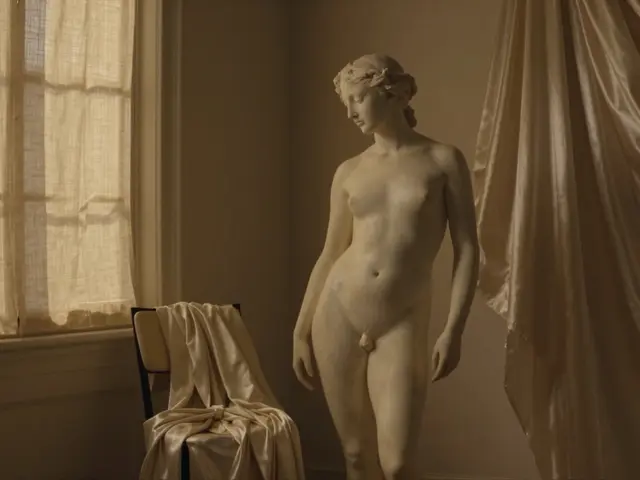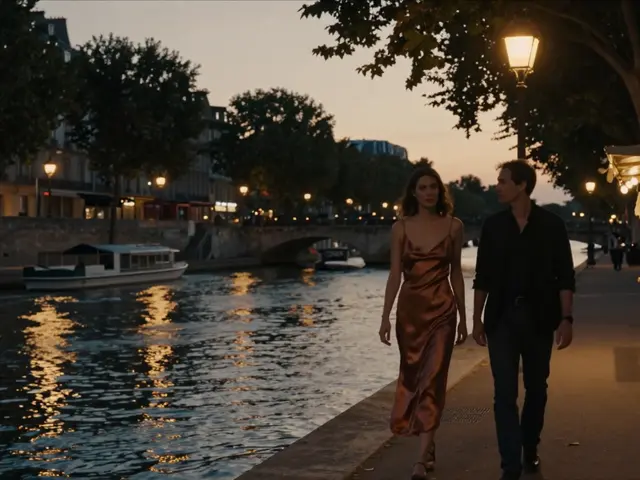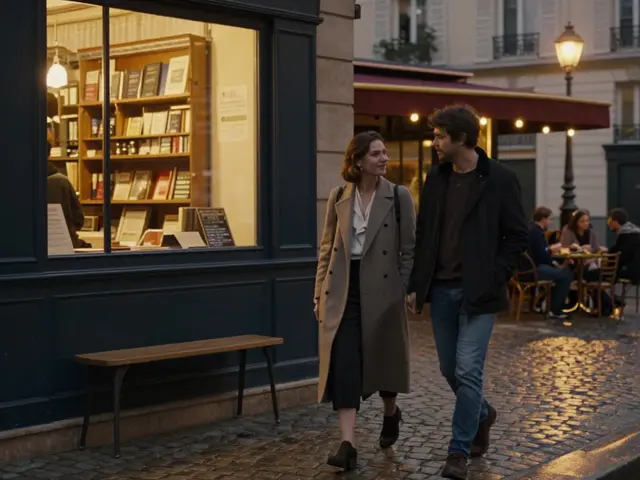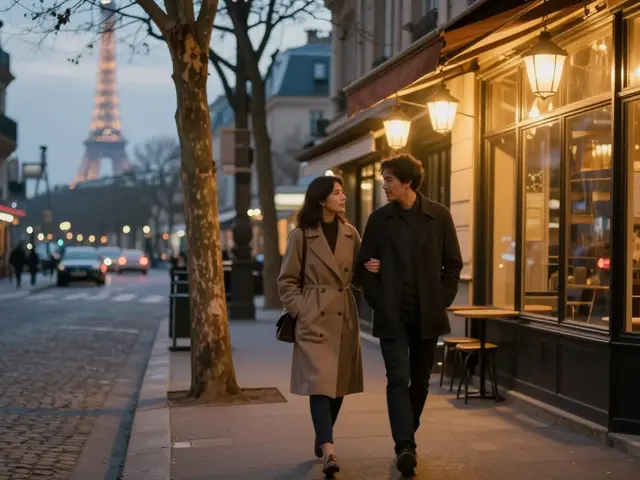Paris has plenty of myths, but few places lived as many lives as Les Bains Douches Paris. You clicked to separate legend from receipts: When did it start? Who actually went? Why did it close, then come back as a hotel? And if you go now, what will you see? Here’s the story-clear, documented, and practical-so you can trace the real arc from steam room to superclub to stylish stay.
Key takeaways and direct answer
TL;DR
- Born as a public bathhouse in 1885, it became Paris’s most watched nightclub in 1978, then a five-star hotel with a members’ club in 2015.
- Its 1980s-90s peak drew Warhol, Bowie, Grace Jones, Prince, and Paris fashion’s inner circle; the Joy Division live recording dated 18 December 1979 proves how early bands claimed it.
- Closed for safety reasons in 2010, the building hosted an extraordinary urban art residency in 2013 before restoration.
- Today you can sleep, dine, and sometimes dance there, but it’s not a museum; the vibe is intimate, curated, and reservation-heavy.
- If you’re mapping Paris nightlife history, pair it with a stop at Le Palace’s former site-together they tell the full late‑70s/80s story.
Direct answer: Les Bains Douches began as a 19th‑century bathhouse, transformed into a trend‑setting nightclub in 1978 under nightlife impresarios of the era, became a global celebrity magnet in the 1980s, shut in 2010, and reopened in 2015 as a boutique hotel and private club. The cultural footprint is documented by primary sources like Joy Division’s live album “Les Bains Douches 18 December 1979,” French press archives from the 1980s and 1990s, and the hotel’s 2015 press materials announcing the rebirth. If you visit in 2025, expect boutique hospitality, an intimate club on select nights, and design details that nod to the original baths rather than a preserved time capsule.
The unfolding history: from water to nightlife to design hotel
Why the baths mattered: Paris’s 1880s public baths were a public health win and a social equalizer. Les Bains et Lavoirs du Bourg‑l’Abbé opened in 1885 with hot and cold baths, steam rooms, and ornate tiling. Think mosaic floors, ceramics, and palm‑house fantasy-Victorian wellness with Parisian flourish. That exotic spa energy never quite left the building.
1978: the flip: In the late 1970s, the site was reborn as a restaurant‑discothèque that mixed bathing heritage with nightlife theater. It wasn’t just a club; it was a room where models ate next to musicians, where fashion editors shared space with students and artists. Unlike mega‑clubs, it favored intense proximity: glossy tile, a catwalk‑like dance floor, and a revolving door of artists who shaped music and style.
1979-1983: music writes the receipts: On 18 December 1979, Joy Division played a set here-later released as “Les Bains Douches 18 December 1979.” That record is hard evidence that, from the jump, the club wasn’t just a VIP playground; it was a stage for bands who were defining the era. Contemporary French and international press chronicled Andy Warhol sketching the room, David Bowie sliding in, Grace Jones turning a late entrance into a performance, and Prince test‑driving the booth unannounced. That mix-art, fashion, post‑punk-set the DNA.
Mid‑1980s-1990s: the long burn: Through the 80s and 90s, the guest lists kept stacking: designers and supermodels from the runway to the tiled floor in the same night. Unlike gargantuan dance temples, Les Bains was about seeing and being seen at arm’s length. DJs experimented; photographers used the club as a backdrop for editorials and ad campaigns; after‑shows for Paris Fashion Week got ink here. The city’s cultural pages treated it as a barometer: if a scene landed at Les Bains, it was officially a scene.
2000s: the strain shows: Times changed. Licensing got tighter, the neighborhood shifted, and the building itself aged hard. By 2010, authorities flagged structural and safety concerns. The club went dark. What followed could have been a sad fade‑out.
2013: an art interlude few places get: With the building awaiting renovation, a temporary art residency invited urban artists to take over the empty club. Stairwells, pools, walls-everything became canvas. Documentation from galleries, press, and the property’s own notes show this wasn’t a random squat; it was a curated, time‑boxed creative takeover that cemented the place’s myth for a new generation.
2015: rebirth as a hotel and club: The restoration delivered a boutique hotel with a restaurant and a carefully shielded basement club. Interiors nodded to the originals-glossy ceramics, a pool motif-without pretending to be a museum. This was a restart with grown‑up polish. Press kits and hospitality trades in 2015 detail the reopening, the design brief (heritage + contemporary), and the return of curated nightlife on certain nights.
2020s: living heritage: As of 2025, Les Bains operates as an upscale, design‑forward stay with a scene-y bar, seasonal events, and a downstairs club you can’t just wander into. Heritage is the hook; hospitality pays the bills. If you want to feel the old electricity, go on a fashion week night or when the calendar lists a left‑field label showcase. If you want the architecture, book a room and wander the public spaces when the crowd thins.
Quick timeline
- 1885 - Public bathhouse opens; mosaic‑and‑steam glamour.
- 1978 - Reopens as restaurant/club; compact, high‑gloss, high‑mixing.
- 1979 - Joy Division’s Paris set cements music cred.
- 1980s-1990s - Celebrity magnet; fashion and music scenes overlap nightly.
- 2010 - Closed for safety/structural reasons.
- 2013 - Temporary urban art residency enlivens the empty shell.
- 2015 - Reopens as boutique hotel with private club.
- 2025 - Operating as a luxury stay and curated nightlife address.
How we know: The Joy Division live release is a concrete primary source for the early era. Period newspapers and magazines in French archives captured the 80s guest lists and parties. Hospitality trade announcements and the property’s 2015 press materials confirm the reopening details. If you’re digging deeper, search national library digitized press, television archives for culture segments, and fashion week press kits mentioning after‑parties at Les Bains.
Personal note: I first came across the Joy Division album in a dusty Melbourne shop and thought, “A Paris bathhouse? As a club?” When I finally walked into the modern hotel years later, the glossy tiles and that tight, cinematic layout made sense. The room forces encounters. That’s the secret.
How to experience it now: practical tips, prices, and what it actually feels like
What to expect in 2025: This is a boutique hotel with design‑heavy common spaces, a restaurant/bar that draws a stylish crowd, and a downstairs club that works on lists, members, or event RSVPs. It’s intimate. The old myth is present, but curated. Don’t expect a museum or a giant dance floor; expect a jewel box where the details-the tile, the lighting, the scale-do a lot of the mood work.
Best ways to get inside
- Book a stay: You get easy access to the building, a calmer read of the design in daylight, and first dibs on dinner/cocktails.
- Reserve dinner or drinks: The bar/restaurant is busy on weekends and fashion weeks. Midweek early slots are friendlier.
- Watch the events calendar: Club nights are not daily; they’re curated. If you see a label night or an art/fashion tie‑in, that’s usually the move.
- Mind the door: Small room, real curation. Polished smart‑casual, confident but not pushy at the door, and a clear RSVP help.
Indicative 2025 prices (subject to change)
- Rooms: roughly €380-€1,200+ per night depending on category, season, and events.
- Cocktails: €18-€28; wine by the glass often starts around €10-€14.
- Dinner: count on €60-€110 per person for a starter, main, dessert, and a drink.
- Club entry: often via guest list or event RSVPs; pricing varies, sometimes complimentary with RSVP, sometimes ticketed for special nights.
Pro tips
- Go early for design, late for energy. If you care about the mosaic‑and‑mirror moments, catch the room before 8pm. If you want that 80s‑style charge, aim after 11pm on curated nights.
- Fashion weeks are peak mythology. If you’re in during Paris Men’s/Women’s, expect elevated people‑watching and stricter door policy.
- Manage expectations. You’re experiencing a living, polished homage, not a preserved relic. The soul is intimacy, not scale.
Safety and etiquette
- Keep phones subtle; some nights discourage flash photography.
- Bag awareness like any busy bar; use crossbody or coat check.
- Respect staff directives-small rooms depend on flow.
- Late‑night transport: pre‑plan your ride app or nearby taxi rank rather than wandering to find a car at 2am.
If you’re here for history, not nightlife
- Visit daytime for a drink; quietly take in the tilework, mirrors, and spatial layout.
- Pair it with a Marais walk-trace other 19th‑century façades and covered passages to feel the period context.
- Seek out the Joy Division recording; it’s the fastest way to hear the room’s early aura.
Context, comparisons, FAQs, and next steps
How does it stack up against Le Palace? If Les Bains was a jewel box where everyone brushed shoulders, Le Palace was the theater-grand, decadent, and built for spectacle. Both defined late‑70s/80s Paris nights, but they did different jobs.
| Venue | Opened (modern era) | Vibe | Notable Pull | Legacy | Status in 2025 |
|---|---|---|---|---|---|
| Les Bains Douches | 1978 | Intimate, tiled, fashion‑adjacent; music up close | Warhol, Bowie, Grace Jones, Prince, Joy Division live set | Blueprint for the “small room, big impact” club | Boutique hotel + curated private club |
| Le Palace | 1978 (nightclub era) | Grand theater turned disco; maximalist, flamboyant | Karl Lagerfeld’s crowd, rock royalty, haute couture after‑parties | Paris’s Studio 54 analog in scale and spectacle | Operating as a theater/venue; not a nightly disco |
Quick checklist: doing Les Bains right
- Decide your goal: design peek, dinner/drinks, or club night.
- Book what you can: table or room, especially Thu-Sat and fashion weeks.
- Dress the part: elevated smart‑casual; think clean lines, not costume.
- Arrive on time for reservations; late arrivals lose tables fast.
- Be door‑smart: RSVP proof ready, calm confidence, no crowd at the rope.
Mini‑FAQ
- What does “Les Bains Douches” mean? Literally “the baths and showers,” the old term for public bathhouses.
- Did people actually bathe there in club years? The club leaned on the bathhouse look more than full bathing services; the pool and steam‑room aesthetics became backdrop and brand language.
- Can I see the original pool? The current design riffs on the original architecture; access depends on the hotel/club’s current layout and policies. Treat it as a reinterpretation, not an open museum exhibit.
- Is there a dress code? It’s curated more than codified. Smart, intentional, and polished beats flashy logos. Athletic wear and bulky backpacks get side‑eye.
- Are photos allowed? In public spaces, usually yes-but low‑key. In the club, follow staff guidance; flash and filming can be restricted.
- Where can I verify the music history? Start with Joy Division’s “Les Bains Douches 18 December 1979” release, then check French newspaper/magazine archives and fashion week press clippings from the 80s-90s.
- Is it still cool or just nostalgic? Both. The present‑day draw is design‑driven hospitality with selectively hot nights. If you’re expecting an unfiltered 1982, that ship sailed; if you’re into intimate rooms with a storied past, it delivers.
Next steps by persona
- Nightlife hunter: Track the venue’s event calendar two weeks out; aim for label nights or art/fashion tie‑ins; arrive by 11pm.
- Design lover: Book a weekday stay; tour public spaces late morning; grab a corner table to observe tile, mirrors, and lighting.
- Music/history nerd: Listen to the Joy Division recording start‑to‑finish, then compare setlists from other 1979 Paris gigs to catch the city’s sound in context.
- Researcher: Use national library press databases for 1980s coverage; check TV archives for culture segments; pull hospitality trade notes from 2015 for reopening details.
- If you can’t get in: Pivot to a reservation upstairs, or time a late drink; otherwise, sample other historic‑leaning Paris rooms that balance heritage and scene, and try again on a midweek date.
If you measure a city by the rooms that changed it, Les Bains still counts. It started with hot water and ended up boiling the culture. Today, it’s calmer-but the charge is still there if you time it right.






Elina Willett
September 4, 2025 AT 14:46This place has always been about performance, not preservation. From the moment the tiles got lit and the music turned up, Les Bains became a stage where every handshake mattered and every elbow had meaning. The bathhouse origin is charming and real, but the real story is about human choreography: who got to sit where, who could afford the bill, and who could turn a late entrance into spectacle. That proximity is the building's legacy more than any mosaic. People keep romanticizing an untouched relic and that misses the point, because Les Bains never wanted to be frozen in amber. It wanted heat, noise, and people bumping into each other. The Joy Division recording is a clean slice of evidence, sure, but it isn't the whole loaf. Photographs of Warhol sketching and Bowie slipping away are nice, but they are snapshots of a social machine that fed on seeing and being seen. Walking in now you feel curated echoes, not the raw collapse of sweat and cigarettes that once made certain nights sing. The hotel did the right thing by saving the bones and turning the rest into hospitality that pays the mortgage. If spots like this went full museum, they'd die in a different way, because people love myth more than bricks. For those wanting authenticity, booking a stay on a quiet weekday is smarter than swinging by hoping for a miracle. For those chasing energy, go on the nights when a label or a fashion party occupies the room and remember that the old electricity is filtered through 2015 PR. Either vibe is valid, and both are part of the living history. Just stop treating the place like a shrine to an era that only existed on film; it evolved, and that evolution is a story in its own right.
Joanne Chisan
September 4, 2025 AT 17:33Sounds about right - glamour recycled into a boutique product, and people lap it up.
Peter Szarvas
September 16, 2025 AT 07:20Good practical tips here for anyone planning a visit. Booking a room is the easiest way to experience the design details without door drama. Midweek dinners are the sweet spot for seeing the tiles and lighting without the crush. If you want club energy, check the events calendar and arrive late, which keeps things efficient and fun. Respecting the staff and the small space helps everyone have a better night. And yes, the Joy Division recording is a fantastic archival entry point before you go.
Faron Wood
September 16, 2025 AT 08:20That Joy Division tape gives you chills; it grabs the air of a tiny room and squeezes it tight. I've been there when a DJ dropped a track that made the tiles seem like a chorus. The crowd was half models, half kids trying too hard, and half people who simply wanted to be seen. Sometimes the most interesting moments are the accidental ones, like a photographer stepping back and catching a candid that ends up shaping a whole look. There is a weird intimacy to tiled walls and low ceilings that you don't get in warehouse spaces. You feel close enough to notice the groove in someone's laugh. The staff moves like stagehands, keeping the flow while pretending to not be seen. That sly control is part of the charm. Don't expect huge stages or massive drops. Expect texture, closeness, and a tiny theater vibe. Leave the ego at home and the night will repay you tenfold.
kamala amor,luz y expansion
September 22, 2025 AT 02:13Everybody's acting like the rebirth was some tasteful miracle, but the truth is messier and more political than the press kits make out. The building's survival hinged on money, on who could convince planners and investors that a glossy hotel would be more profitable than a gritty nightlife venue. Heritage talk was the wrapper; real decisions were about permits, liability, and branding. That matters because the version of Les Bains people fetishize is curated by committees and contracts. The 2013 art residency was a nice headline, but it was also a controlled way to show the building still had cultural capital, which then justified a luxury conversion. The original bathhouse served working people, and that social function disappeared long before the velvet rope era arrived. People love to moralize about lost community, but gentrification is not an accident; it's a plan that unfolds in permits and price lists. Saying the hotel honors the past is technically true, but it honors only the parts that translate easily into boutique design. The pool motif and glossy tiles are aestheticized fragments, and they look great in Instagram posts. That doesn't mean the social ecosystem that made the club alive was respected or preserved. For younger visitors expecting rawness, they'll mostly get carefully managed nostalgia. For older regulars, the change is a slow grief that gets smoothed over by champagne and concierge service. Still, I won't pretend the place has no value now. It keeps a story visible, even if that story is edited. Just don't romanticize the economics that caused the shift, because those forces are real and ongoing, and they reshape every neighborhood they touch. The building survived, but the people it served in earlier eras mostly did not.
Matt Morgan
September 22, 2025 AT 03:13That's a solid point about economics driving the change, and it's sad but true. Preservation often comes with strings and a price tag. Still, having the site alive in some form keeps the memory available to new generations. If the goal is to feel the architecture and cultural echoes, plan ahead and focus on daytime details. That way you get history without the velvet-rope spin.
K Thakur
September 27, 2025 AT 21:06There is a whole other angle that people are glossing over, and it ties into how venues like this become hubs for larger cultural engineering. The late 70s and 80s were a testing ground for orchestrated celebrity culture, and small rooms with big names were engineered spaces where image, access, and narrative were curated in real time. Media players used those nights to create stories that would ripple through fashion magazines and music press, and the venue was the instrument for those campaigns. The Joy Division recording is one artifact, but many smaller editorial decisions, guest lists, and after‑party placements were part of a deliberate system to manufacture cool. That system did not just reflect culture, it amplified certain people and silenced others. When the place closed for safety, that pause offered an opening for new players to step in and monetize the nostalgia. Investors recognized an evergreen brand and turned it into a low‑risk hospitality play with membership models and event curation that look exclusive by design. Meanwhile, the city benefits from tax revenue and PR, which creates a neat loop: culture becomes a marketable asset, and the market rewards curated access. People who think this was purely organic are missing how infrastructure and capital steer cultural memory. The rebirth as a hotel was a predictable outcome in that light. It is easier to preserve tile than to preserve the messy social network that made a club matter. Tiles photograph well, after all. Still, as someone who follows these dynamics closely, I appreciate that the brand remains visible. At least there's a thread connecting past and present, even if it's been rewoven into a different cloth. The theater of nightlife survives in new clothes, and that's worth documenting as its own phenomenon rather than mourning a single vanished moment.
NORTON MATEIRO
September 27, 2025 AT 22:06Good breakdown of how culture gets turned into an asset; documenting both the loss and the continuity helps newcomers and researchers. For those visiting, staying curious and reading primary sources like the Joy Division release adds perspective to the aesthetic experience. Keeping that balance makes the visit richer.
Rahul Ghadia
October 2, 2025 AT 12:13Exactly!!! The narrative gets sold back to us wrapped in nostalgia and chrome. The real signals are in small details like insurance clauses, membership tiers, and press releases... not just the tiles. The myth is marketed, loudly, and people buy it willingly.
lindsay chipman
October 4, 2025 AT 11:26The practical takeaway is simple and a little smug: curate your own pilgrimage. If you want context, read the press archives and listen to the 1979 recording before you go. If you want atmosphere, pick a curated night and dress accordingly. If you want architecture, book a weekday stay and linger in the public spaces. Framing the visit with research makes the whole thing click, and it prevents disappointment when the place isn't a live fossil. Use the site's rebirth as a case study in adaptive reuse and brand storytelling, and you get both a good night and a lesson in how cities monetize memory.